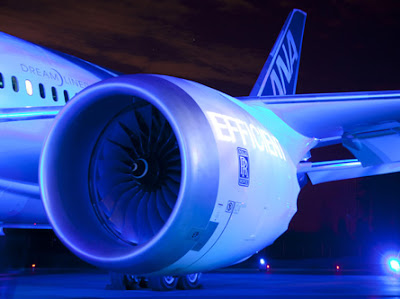This article from The Washington Post talks about the Superjet, a Russian passenger jet, and its recent certification just months after a similar model crashed during a demo flight in Indonesia.
Indonesia has certified a Russian-made passenger jetliner as safe to fly in the country six months after the same model crashed into a volcano during a demonstration flight, an official said Wednesday.
The Sukhoi Superjet-100 was deemed airworthy last week by the country’s general directorate of civil aviation, said Transportation Ministry spokesman Bambang Ervan.
The certification was based on a thorough validation process and has nothing to do with the crash investigation that’s still ongoing, he said.
“It was granted after a careful validation process, which found the type has met all required standards,” Ervan said.
In May, a Sukhoi Superjet-100 crashed into Mount Salak, a dormant Indonesian volcano, during a demonstration flight to impress potential buyers, killing all 45 people aboard.
Masruri, head of the Air Transportation Safety Division, said the investigation into the crash has been completed and the results are expected to be announced as soon as next month. He declined to provide any additional details. Like many Indonesians, he uses only one name.
Meanwhile, Sunaryo, an official from Sukhoi’s representative office in Indonesia, PT Trimarga Rekatama, said the certification will allow delivery of the aircraft to its first customer in Southeast Asia, the Indonesian airline Sky Aviation, which has signed a deal for 12 planes.
He added that the first delivery is expected to arrive before the end of the year.
Another Indonesian company, Kartika Airlines, also ordered 30 aircraft, but the fate of that deal is not clear following the crash, Sunaryo said.
The Superjet is Russia’s first new model of passenger jet since the fall of the Soviet Union two decades ago and is intended to help resurrect its aerospace industry.
Thursday, November 29, 2012
Tuesday, November 6, 2012
Flying together: Eric Visselli and partnering with the sky's giants
 |
| Eric Visselli Image Credit: cbc.ca |
Eric Visselli is the Chief Financial Officer of Hamilton Sundstrand Auxiliary Power Systems, a subsidiary of the United Technologies Corporation that supplies aircraft power supply systems to major providers of the aviation industry.
Air travel has evolved several times since its beginnings early in the twentieth century. At first, boarding a plane that soars over mountains and crosses seas was reserved for the privileged, whose cabins were retrofitted for the needs of the people of their class. Then multi-class cabins that provided seats and amenities that depended largely on a passenger’s ability to pay were crafted. Eventually, budget carriers began taking off, making flying an accessible mode of transportation.
 |
| Eric Visselli Image Credit: flightglobal.com |
Eric Visselli has been witness to the evolution of aviation, and must have ascertained that one factor remains constant despite the progress of the industry. For so long as aircraft are allowed to take off with people on board, the plane must be well-equipped and adequately powered from the moment it taxies off the runway until it touches down on its port of destination.
Recently, leading power systems provider Hamilton Sundstrand signed on with two major airlines for long-term partnerships that place Hamilton Sundstrand’s premium products in the airlines’ respective Embraer and Airbus fleets. Muscat-based airline Oman Air has signed on to have the company’s APS2300 Auxiliary Power Unit (APU) installed in its Embraer fleet, while the Turkish Onur Air had the same product installed in its stable of Airbus craft.
 |
| Eric Visselli Image Credit: omanair.com |
The APS2300 APU may be found in 800 Embraer craft of various models, while the same may be found in more than 1,700 Airbus craft the world over.
Read more about Eric Visselli through this Facebook page.
Subscribe to:
Posts (Atom)